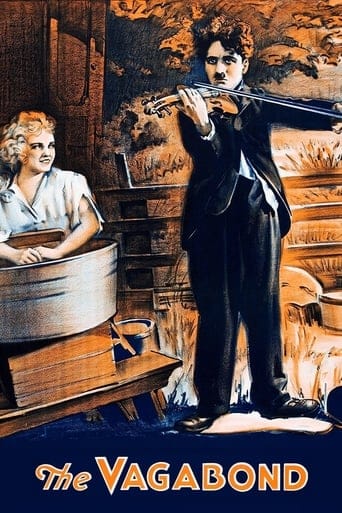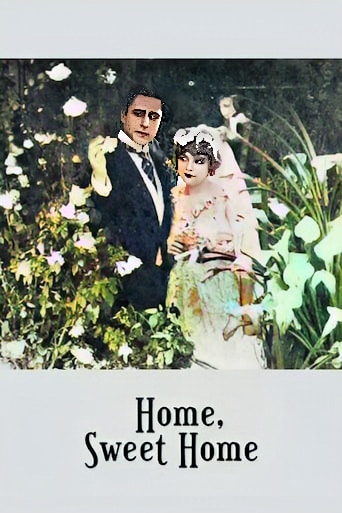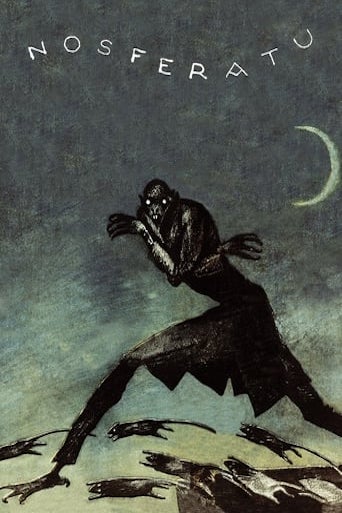The Vagabond (1916)

 “The Vagabond” is a silent film directed by Charlie Chaplin, one of the most iconic figures in the history of cinema.
“The Vagabond” is a silent film directed by Charlie Chaplin, one of the most iconic figures in the history of cinema.
Released in 1916, this short film is a significant work in Chaplin’s early career, showcasing his talent as a performer, director, and screenwriter. “The Vagabond” blends comedy and drama in a way that epitomizes Chaplin’s unique style and storytelling abilities.
The film features Charlie Chaplin in his iconic role as the Tramp, a lovable and enduring character that would become one of the most recognized figures in the world of cinema. The Tramp is a down-and-out, itinerant violinist who roams the countryside, earning a meager living through his musical performances. His appearance, characterized by a bowler hat, a toothbrush mustache, and oversized shoes, has become an enduring symbol of silent film comedy.
In “The Vagabond,” the Tramp stumbles upon a dilapidated camp of Gypsy fortune tellers. It is here that he meets Edna Purviance’s character, a beautiful and mistreated Gypsy girl who is held captive by her cruel and abusive family. The Tramp intervenes, helping the girl escape from her captors, and he takes her to a nearby town to seek medical attention for her injuries.
As the Tramp and the Gypsy girl bond, a tender and heartfelt romance begins to blossom. Their connection forms the emotional core of the film, revealing Chaplin’s ability to blend humor with genuine sentiment. This dual approach is characteristic of his storytelling, as he often used comedy to explore deeper human emotions and societal issues.
One of the film’s most memorable scenes is the poignant sequence in which the Tramp takes the Gypsy girl to a park and nurses her back to health. The tenderness of their interactions and the Tramp’s heartfelt concern for her well-being demonstrate Chaplin’s ability to convey deep emotion through his performances.
However, their newfound happiness is short-lived as the Gypsy family, led by her brutish father, attempts to reclaim her. The film builds to a dramatic climax in which the Tramp confronts the family, leading to a rescue operation that further demonstrates his courage and determination.
“The Vagabond” is celebrated for its mix of slapstick comedy, romance, and pathos. Chaplin’s physical comedy and precise timing are on full display as he navigates a range of comedic situations, from his interactions with the Gypsy family to his entertaining musical performances. These elements are seamlessly integrated into the broader narrative, highlighting Chaplin’s directorial and screenwriting skills.
As with many of Chaplin’s works, “The Vagabond” carries underlying social commentary. The film sheds light on themes of poverty, social injustice, and the mistreatment of women, as seen in the plight of the Gypsy girl. While the film’s primary goal is to entertain, it also offers a glimpse into the societal concerns of the time.
In conclusion, “The Vagabond” (1916) is a silent film directed by and starring Charlie Chaplin. It showcases his iconic Tramp character and blends comedy, romance, and pathos. The film is a testament to Chaplin’s multifaceted talents as a performer, director, and screenwriter, and it continues to be celebrated for its enduring charm and emotional resonance in the history of cinema.
Release Date: June 10th, 1916
Main Cast Members
Charlie Chaplin (Street Musician)
Edna Purviance (Girl Stolen by Gypsies)
Eric Campbell (Gypsy Chieftain)
Charlotte Mineau (The Girl’s Mother)
Albert Austin (Trombonist)
Lloyd Bacon (Artist)
Henry Bergman (uncredited)
Frank J. Coleman (Gypsy and Musician)
Phyllis Allen (uncredited)
Loading live eBay listings...




